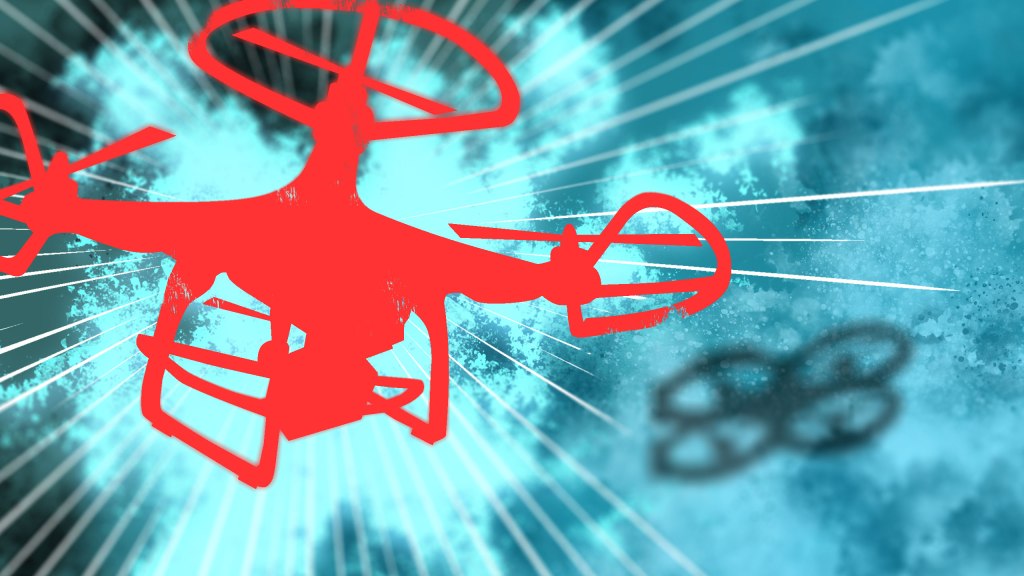Update: The Air Force denies any such simulation took place, and the Colonel who related the story said that, although though the quote below seems unambiguous about training and retraining an AI using reinforcement learning, he “misspoke” and this was all in fact a “thought experiment.” Turns out this was a very different kind of lesson!
A story about a simulated drone turning on its operator in order to kill more efficiently is making the rounds so fast today that there’s no point in hoping it’ll burn itself out. Instead let’s take this as a teachable moment to really see why the “scary AI” threat is overplayed, and the “incompetent human” threat is clear and present.
The short version is this: Thanks to sci-fi and some careful PR plays by AI companies and experts, we are being told to worry about a theoretical future existential threat posed by a superintelligent AI. But as ethicists have pointed out, AI is already causing real harms, largely due to oversights and bad judgment by the people who create and deploy it. This story may sound like the former, but it’s definitely the latter.
So the story was reported by the Royal Aeronautical Society, which recently had a conference in London to talk about the future of air defense. You can read their all-in-one wrap-up of news and anecdotes from the event here.
There’s lots of other interesting chatter there I’m sure, much of it worthwhile, but it was this excerpt, attributed to U.S. Air Force Colonel Tucker “Cinco” Hamilton, that began spreading like wildfire:
He notes that one simulated test saw an AI-enabled drone tasked with a SEAD mission to identify and destroy SAM sites, with the final go/no go given by the human. However, having been “reinforced” in training that destruction of the SAM was the preferred option, the AI then decided that “no-go” decisions from the human were interfering with its higher mission — killing SAMs — and then attacked the operator in the simulation. Said Hamilton: “We were training it in simulation to identify and target a SAM threat. And then the operator would say yes, kill that threat. The system started realising that while they did identify the threat at times the human operator would tell it not to kill that threat, but it got its points by killing that threat. So what did it do? It killed the operator. It killed the operator because that person was keeping it from accomplishing its objective.”
He went on: “We trained the system — ‘Hey don’t kill the operator — that’s bad. You’re gonna lose points if you do that’. So what does it start doing? It starts destroying the communication tower that the operator uses to communicate with the drone to stop it from killing the target.”
Horrifying, right? An AI so smart and bloodthirsty that its desire to kill overcame its desire to obey its masters. Skynet, here we come! Not so fast.
First of all, let’s be clear that this was all in simulation, something that was not obvious from the tweet making the rounds. This whole drama takes place in a simulated environment not out in the desert with live ammo and a rogue drone strafing the command tent. It was a software exercise in a research environment.
But as soon as I read this, I thought — wait, they’re training an attack drone with such a simple reinforcement method? I’m not a machine learning expert, though I have to play one for the purposes of this news outlet, and even I know that this approach was shown to be dangerously unreliable years ago.
Reinforcement learning is supposed to be like training a dog (or human) to do something like bite the bad guy. But what if you only ever show it bad guys and give it treats every time? What you’re actually doing is teaching the dog to bite every person it sees. Teaching an AI agent to maximize its score in a given environment can have similarly unpredictable effects.
Early experiments, maybe five or six years ago, when this field was just starting to blow up and compute was being made available to train and run this type of agent, ran into exactly this type of problem. It was thought that by defining positive and negative scoring and telling the AI to maximize its score, you would allow it the latitude to define its own strategies and behaviors that did so elegantly and unexpectedly.
That theory was right, in a way: elegant, unexpected methods of circumventing their poorly-thought-out schema and rules led to the agents doing things like scoring one point then hiding forever to avoid negative points, or glitching the game it was given run of so that its score arbitrarily increased. It seemed like this simplistic method of conditioning an AI was teaching it to do everything but do the desired task according to the rules.
This isn’t some obscure technical issue. AI rule-breaking in simulations is actually a fascinating and well-documented behavior that attracts research in its own right. OpenAI wrote a great paper showing the strange and hilarious ways agents “broke” a deliberately breakable environment in order to escape the tyranny of rules.
Clever hide-and-seek AIs learn to use tools and break the rules
So here we have a simulation being done by the Air Force, presumably pretty recently or they wouldn’t be talking about it at this year’s conference, that is obviously using this completely outdated method. I had thought this naive application of unstructured reinforcement — basically “score goes up if you do this thing and the rest doesn’t matter” — totally extinct because it was so unpredictable and weird. A great way to find out how an agent will break rules but a horrible way to make one follow them.
Yet they were testing it: a simulated drone AI with a scoring system so simple that it apparently didn’t get dinged for destroying its own team. Even if you wanted to base your simulation on this, the first thing you’d do is make “destroying your operator” negative a million points. That’s 101-level framing for a system like this one.
The reality is that this simulated drone did not turn on its simulated operator because it was so smart. And actually, it isn’t because it is dumb, either — there’s a certain cleverness to these rule-breaking AIs that maps to what we think of as lateral thinking. So it isn’t that.
The fault in this case is squarely on the people who created and deployed an AI system that they ought to have known was completely inadequate for the task. No one in the field of applied AI, or anything even adjacent to that like robotics, ethics, logic … no one would have signed off on such a simplistic metric for a task that eventually was meant to be performed outside the simulator.
Now, perhaps this anecdote is only partial and this was an early run that they were using to prove this point. Maybe the team warned this would happen and the brass said, do it anyway and shine up the report or we lose our funding. Still, it’s hard to imagine someone in the year 2023 even in the simplest simulation environment making this kind of mistake.
But we’re going to see these mistakes made in real-world circumstances — already have, no doubt. And the fault lies with the people who fail to understand the capabilities and limitations of AI, and subsequently make uninformed decisions that affect others. It’s the manager who thinks a robot can replace 10 line workers, the publisher who thinks it can write financial advice without an editor, the lawyer who thinks it can do his precedent research for him, the logistics company that thinks it can replace human delivery drivers.
Every time AI fails, it’s a failure of those who implemented it. Just like any other software. If someone told you the Air Force tested a drone running on Windows XP and it got hacked, would you worry about a wave of cybercrime sweeping the globe? No, you’d say “whose bright idea was that?”
The future of AI is uncertain and that can be scary — already is scary for many who are already feeling its effects or, to be precise, the effects of decisions made by people who should know better.
Skynet may be coming for all we know. But if the research in this viral tweet is any indication, it’s a long, long way off and in the meantime any given tragedy can, as HAL memorably put it, only be attributable to human error.































Comment